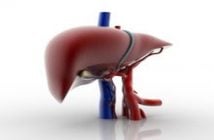Inflammatory fatty liver disease (NASH, non-alcoholic steatohepatitis ) and the resulting liver cancer are driven by autoaggressive T cells. Scientists from the German Cancer Research Center (DKFZ) now show what is behind this destructive behaviour. In both mice and humans with NASH, they found increased numbers of activated B cells in the gastrointestinal tract.
The B cells promote the development of liver cancer with a dual strategy: via direct cell-cell contact, they activate autoaggressive T cells. In addition, the B cells produce IgA class antibodies that activate specific immune cells, thereby driving liver fibrosis. When the B cells are turned off, inflammation and fibrosis regress in mice and fewer and smaller liver tumours develop.
Liver cancer is the fourth leading cause of cancer death worldwide. The disease is driven by chronic inflammation triggered, for example, by viral infections or alcohol abuse. Very often, an unhealthy lifestyle is also the underlying cause: Too many calories, too little exercise and too high a body weight lead to a fatty liver. This, in turn, can result in non-alcoholic liver inflammation, also known as NASH, a veritable breeding ground for liver cancer.
“Worldwide, fatty liver and NASH are assuming pandemic proportions,” says Mathias Heikenwälder of the German Cancer Research Center, a specialist in the links between chronic inflammation and liver cancer. Recently, a research team led by him found that NASH is driven by autoaggressive T cells that promote inflammatory tissue damage and even cancer development in the liver.
What drives T cells to behave in this destructive manner? Several experimental findings suggested that B cells producing IgA class antibodies play a role in this process. Heikenwälder’s team investigated this suspicion in a recent study in mice.
In mice fed a high-fat diet, inflammatory liver disease develops – much like in humans – and the animals often develop liver cell cancer. In contrast, mice that are genetically unable to produce B cells do not develop the disease under the same diet. In the livers of mice suffering from NASH, the researchers found a greatly increased number of activated B cells.
The B cells exert their disastrous influence on the liver in two ways: In the small intestine, they instigate T cells to behave auto aggressively via direct cell-cell contacts. The researchers were also able to reproduce this in the culture dish when they brought B cells from NASH mice together with CD8 T cells from a healthy animal, which were thereby activated to autoaggressive behaviour.
In addition, the immunoglobulin A (IgA) produced by the B cells activates another group of immune cells, macrophages, which carry special IgA receptors on their surface. The activated macrophages aggravate fibrotic changes in the liver. If the B cells are switched off with a specific antibody in the NASH-afflicted animals, both the inflammation driven by the autoreactive T cells and the fibrosis regress.
Heikenwälder’s team also examined tissue samples from people who had undergone surgery on the gastrointestinal tract to reduce weight (“bariatric surgery”). The findings strongly resembled those of mice suffering from NASH: Compared with healthy individuals, the tissue from NASH patients contained significantly more B cells, higher IgA levels and a higher number of activated macrophages.
“The results clearly show us that B cells, as well as IgA, are required to drive the pathological cascade in the development of liver cancer,” Mathias Heikenwälder summarizes. “The good thing is that these results show us new ways to preventively interrupt this cancer-driving cascade: If we switch off the B cells with antibodies, the NASH symptoms regress and the animals develop fewer and smaller cancer foci. Fortunately, approved drugs already exist that suppress B-cell activation and that could possibly also stop NASH in humans and thus perhaps also liver cancer. However, there are no results from human studies on this yet.”
Click here to read the study.
Source: German Cancer Research Center (Deutsches Krebsforschungszentrum, DKFZ)





